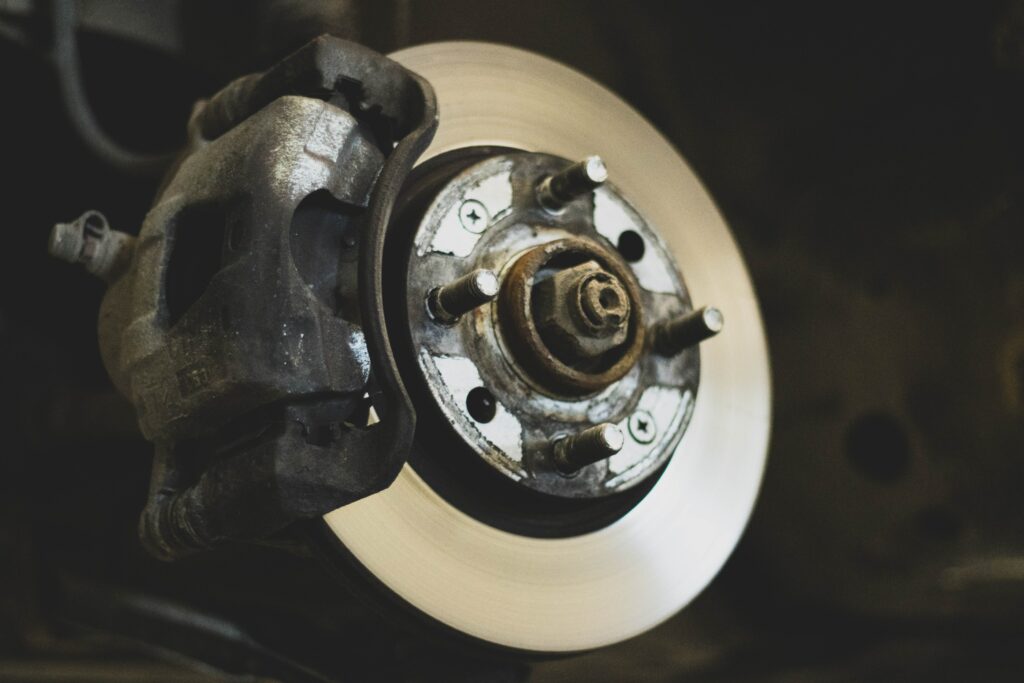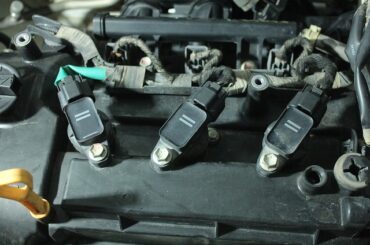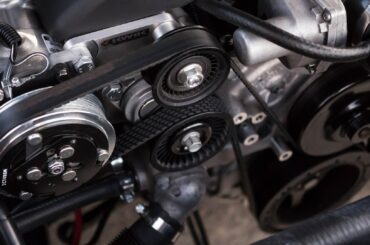The unseen heroes of your car’s structure, subframes play a pivotal role in the safety and performance of your vehicle. These components are often overshadowed by more prominent features like the engine or sleek exterior design. However, understanding the implications of a bent subframe in your car is crucial for any car owner.
In this article, we will delve into the world of subframes and explore why they are integral to a vehicle’s structural integrity. A bent subframe might go unnoticed by many drivers, but its consequences can be far-reaching, affecting everything from alignment to safety.
Contents
What is a Subframe
A subframe, though hidden from view beneath your car’s body, is the unsung hero of your vehicle’s structural integrity. Simply put, it’s a robust, usually metal framework that forms a critical part of your car’s chassis. But what makes it so vital?

A subframe’s primary role is to provide support, stability, and structure to key components within your vehicle. It serves as a secure mounting point for crucial elements of your car, including the engine, transmission, and suspension components. Think of it as the backbone that ensures these components work in harmony.
The engine, the powerhouse of your car, sits atop the subframe, secured firmly in place. This support is essential to maintain the engine’s alignment and stability, ensuring it operates optimally.
Likewise, the transmission, responsible for delivering power from the engine to the wheels, relies on the subframe for support. A bent or damaged subframe can adversely affect the transmission’s alignment and functionality, leading to performance issues.
The suspension components, like shock absorbers, control arms, and springs, connect to the subframe. This linkage provides stability and affects your car’s ride comfort, handling, and overall safety.
Causes of a Bent Subframe
While subframes are designed to withstand various forces, they are not impervious to damage. There are several common reasons for subframe damage, and each can significantly impact your car’s structural integrity.
1. Accidents and Collisions:
One of the leading causes of subframe damage is vehicular accidents and collisions. Whether a fender-bender or a more severe crash, the forces generated during impact can lead to subframe deformation. These accidents can result in the subframe shifting or bending out of alignment, which, in turn, can affect the engine, transmission, and suspension components. The consequences of a bent subframe can extend beyond the accident itself, making post-collision inspections crucial.
2. Road Hazards:
The road can be a challenging environment for any vehicle. Potholes, uneven road surfaces, and debris on the roadway can subject your car’s subframe to excessive stress. Hitting a deep pothole, for instance, can exert enough force to deform the subframe. Over time, repeated encounters with road hazards can accumulate damage and compromise the subframe’s structural integrity.
3. Off-Road Driving:
For off-road enthusiasts, subframe damage is a risk they must consider. Driving over rough terrain, rocks, or obstacles can lead to substantial impact forces on the subframe. In these conditions, it’s crucial to have a robust subframe and to inspect it regularly to ensure it remains in proper condition.
The impact of these causes on the subframe’s structural integrity cannot be overstated. A bent or damaged subframe can result in misalignment of the wheels, affecting steering and handling. Furthermore, it can lead to uneven tire wear and even cause unusual noises when driving over bumps or rough roads. In severe cases, compromised structural integrity may reduce the car’s ability to absorb and distribute impact forces during a subsequent collision, putting the safety of vehicle occupants at risk.
Signs of a Bent Subframe
Detecting a bent subframe early is crucial for maintaining your car’s performance and safety. While this critical component often remains hidden beneath your vehicle’s surface, there are telltale signs that can alert car owners to potential issues. Here are some common symptoms that may indicate a bent subframe:
1. Misaligned Wheels:
One of the most noticeable signs of a bent subframe is a misalignment of the wheels. If your car drifts to one side, even when the steering wheel is straight, it could indicate subframe damage. This misalignment can lead to uneven tire wear, affecting the tires and your car’s handling.
2. Steering Issues:
A bent subframe can disrupt the proper alignment of the steering components. Car owners may experience difficulties in maintaining a straight course while driving. This can manifest as the need to constantly correct the steering wheel to keep the car on track.

3. Unusual Noises:
Unusual noises from beneath the vehicle can be a clear warning sign. Clunking, rattling, or creaking sounds might suggest subframe issues, particularly when driving over bumps or rough terrain. These noises are often caused by the subframe’s altered position and impact on other nearby components.
4. Uneven Tire Wear:
A bent subframe can affect the vehicle’s tire alignment, causing tires to wear unevenly. Check your tires for irregular wear patterns, such as bald spots or excessive wear on one side. This not only indicates a subframe problem but can also reduce the lifespan of your tires.
5. Handling Problems:
A compromised subframe can lead to compromised handling. Your car may feel less stable when navigating corners or sudden maneuvers. The subframe’s role in supporting suspension components means handling issues may arise due to suboptimal suspension performance.
Safety Concerns
Driving with a bent subframe may seem minor, but the safety implications can be profound and far-reaching. The structural integrity of your car is not something to be taken lightly, and a compromised subframe can have serious consequences for your vehicle’s crashworthiness and passenger safety.
1. Impact on Crashworthiness:
A car’s crashworthiness refers to its ability to protect occupants during an accident. The subframe plays a significant role in this. In a collision, the subframe helps distribute and absorb impact forces, preventing them from reaching the passenger compartment. When the subframe is compromised, it may no longer perform this crucial function effectively.
As a result, even a relatively minor collision can have more severe consequences, as the car’s structural integrity has been compromised. Occupants may be at a higher risk of injury when the subframe cannot distribute and absorb impact forces as designed.
2. Passenger Safety:
The safety of the vehicle’s occupants is paramount. A bent subframe can lead to various safety risks for passengers, including:
Increased Risk of Ejection: A compromised subframe can affect the structural integrity of the car’s body, increasing the risk of doors or windows becoming dislodged during a collision, potentially leading to ejection.
Reduced Protection: When the subframe can’t perform its role in absorbing and distributing impact forces, the vehicle’s crumple zones may not work as effectively. This can lead to more severe injuries to passengers.
Compromised Airbag Deployment: A misaligned subframe can impact the alignment and deployment of safety features such as airbags, reducing their effectiveness in protecting occupants.
Vehicle Stability: Handling issues resulting from a bent subframe can make the car less stable and harder to control in emergencies, increasing the risk of accidents.
Inspection and Diagnosis
When it comes to the safety and performance of your vehicle, a bent subframe is not an issue to be taken lightly. Detecting and addressing subframe problems promptly is crucial. For this reason, car owners should prioritize professional inspection and diagnosis by a qualified mechanic. Here’s why this is so important:
Importance of Professional Inspection:
Expertise: Professional mechanics are trained and experienced in identifying issues related to a car’s subframe and chassis. They have the knowledge and equipment to assess the condition accurately.
Safety: A bent subframe can compromise your vehicle’s crashworthiness and passenger safety. Trusting a professional to assess and rectify the problem ensures that your vehicle is as safe as possible in case of an accident.
Preventive Maintenance: Regular inspections can help identify subframe issues early, preventing them from worsening and saving you from costly repairs or replacements.
Diagnostic Techniques:
Mechanics employ various diagnostic techniques to assess the condition of your car’s subframe. These techniques include:
Visual Inspections: Mechanics will visually examine the subframe for signs of damage. This includes looking for visible deformities, cracks, or corrosion that may have compromised the subframe’s integrity.
Measurements: Precise measurements are taken to assess the alignment of the subframe and its key components. Any deviations from the manufacturer’s specifications can indicate a problem.

Road Tests: Mechanics may conduct road tests to evaluate the vehicle’s handling and steering performance, looking for signs of subframe-related issues, such as misaligned wheels or unusual handling characteristics.
Use of Specialized Tools: Mechanics may use frame-straightening equipment to assess and correct subframe alignment.
Computer Diagnostics: In modern vehicles, computer diagnostics can also be employed to check for alignment and suspension issues related to the subframe.
Bent subframe
In automobiles, essential components often remain hidden, yet their role is nothing short of critical. The subframe of your car falls into this category. It might not be something you think about often, but understanding the implications of a bent subframe is vital for the safety and performance of your vehicle.
The safety concerns of driving a car with a bent subframe are significant. Your car’s crashworthiness, its ability to protect you and your passengers in an accident, hinges on the integrity of the subframe. It’s a linchpin in the system that distributes and absorbs impact forces, and any compromise can have profound consequences.
accidentally drove in 4 wheel drive
The Year’s Most Jaw-Dropping Slanted Truck Incidents
Is It Safe to Drive with a Bent Radiator?






